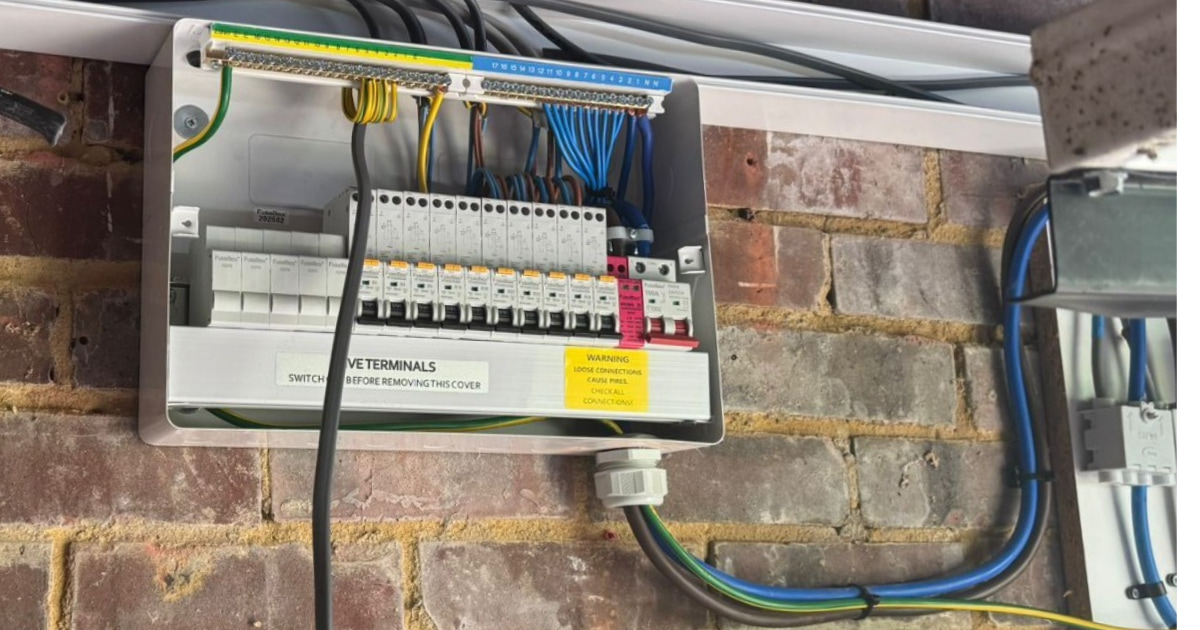If you're a landlord or property manager, keeping on top of electrical safety is a legal must, but you don’t need to be an expert to stay compliant.
This straightforward guide breaks down what an EICR is, what landlords are legally required to do, and how working with the right electrician can make the whole process hassle-free.
What is an EICR?
An EICR (Electrical Installation Condition Report) is a bit like an MOT for your property’s electrics. It’s carried out by a qualified electrician and involves inspecting and testing all fixed electrical installations, things like wiring, fuse boards (consumer units), sockets, switches, lighting, and extractor fans.
The report checks whether everything is safe to use and flags up any issues. Just like an MOT, the findings are graded:
- C1 - Danger present: Immediate action needed
- C2 - Potentially dangerous: Urgent remedial work required
- FI: Further investigation required
- C3 - Improvement recommended: Not essential for a “satisfactory” report, but worth considering
- Notes: General observations that don’t affect safety, often useful for planning future upgrades
Only C1, C2, and FI codes need to be addressed for the report to be marked as satisfactory.
What Do Landlords Need to Do?
In the UK, it is a legal requirement for landlords to:
- Have the electrics in their rental properties tested at least every five years
- Use a qualified and competent electrician for the inspection
- Obtain an EICR after each inspection
- Give a copy of the report to existing tenants within 28 days
- Provide a copy to new tenants before they move in
- Supply the report to the local council within 7 days if requested
- Complete any required remedial work within 28 days (or sooner if the report specifies)
- Keep a copy of the report for future reference
These requirements are in place to help ensure rented properties meet national safety standards (British Standard 7671).
What Will the Report Show?
The EICR outlines:
- Whether the installation is safe for ongoing use
- Any damage, deterioration or defects
- Whether remedial or investigative work is needed
- Optional recommendations to improve safety or efficiency (particularly in older properties)
Keeping Things Simple
Staying on top of inspections and paperwork can be time-consuming, especially if you manage multiple properties. That’s where working with a dedicated contractor like J Kirby Electrical makes a difference.
As your chosen electrical company, we offer secure online access to all your reports and certificates, and automated reminders for when your next inspection is due. For landlords with larger portfolios, we can provide a custom portal link so you can access everything in one place, anytime.
This not only keeps you organised but also helps avoid missed deadlines or lost documents.
What if the Report Shows Problems?
If the EICR identifies any issues, we will clearly explain what needs to be addressed. Once the inspection is complete, we will follow up with an itemised quotation for any remedial work required based on the report's findings.
Our team can then carry out the necessary repairs and provide written confirmation once the work is finished. This documentation should be shared with your tenants and, if requested, the local authority.
Choosing an electrician who can manage both the inspection and the follow-up work helps ensure everything is handled efficiently and in full compliance with regulations.
A Final Word
You don’t need to know every detail of the electrical regulations, that’s our job. But as a landlord, you do have legal responsibilities when it comes to electrical safety.
By arranging regular EICRs and keeping your reports up to date, you’ll stay compliant, protect your tenants, and avoid unnecessary hassle.
Need Help Getting Started?
Get in touch with J Kirby Electrical, we work with landlords every day and can guide you through the process from start to finish.



